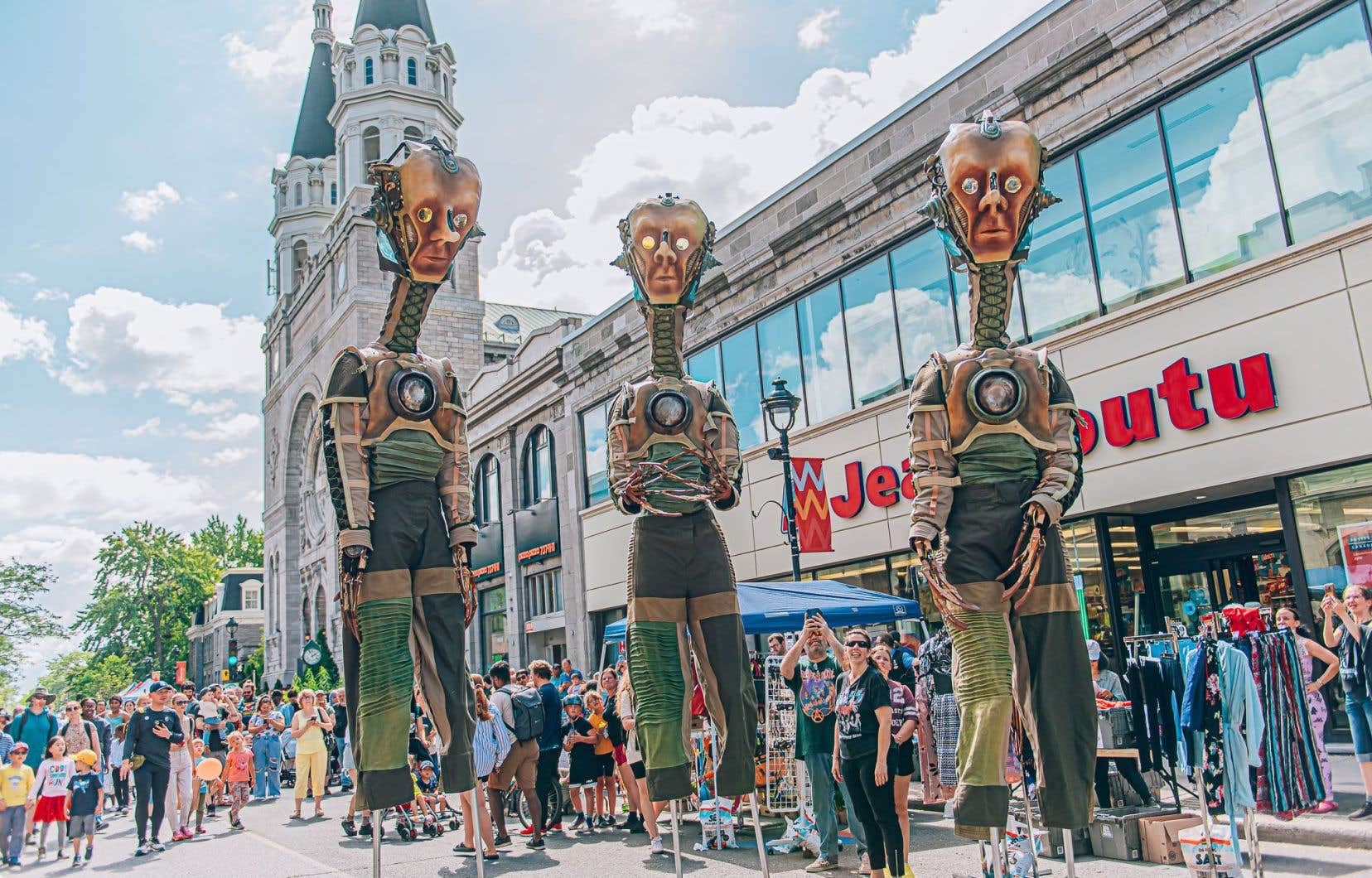This August, two puppet events will bring the city to life: Casteliers sur l’herbe in Outremont and the Festival Marionnettes plein la rue in Verdun. The three shows from the first will be presented in parks, while the traveling shows and short performances (most lasting from one to thirty minutes) from the second will take over Wellington Street, over a distance of 1.3 kilometres. This arrival of animated creatures of all sizes and materials is a testament to the liveliness of the Quebec puppet scene.
This is particularly embodied in the places dedicated to this art. Not only was the Maison internationale des arts de la marionnette (MIAM) born in 2018 from the concerted efforts of the broadcaster Casteliers and the Association québécoise des marionnettistes (AQM), but L’Illusion, a puppet theatre located at the corner of Beaubien and Saint-Denis streets, reopened its doors last fall after practically doubling its surface area. Now with two rooms, the place can present more shows and welcome artists in residence. At the same time, the company Les Sages Fous, in Trois-Rivières, inaugurated its Fabrique de l’insolite, a place dedicated to puppetry creation, the result of the reconversion of the Saint-James church.
On the AQM side, general director Vincent Ranallo notes an increase of about 30% in the number of members since 2017, which is equivalent to about sixty additional registrations. He notes, as does Louise Lapointe, artistic director of Casteliers, that the increased interest in this art form seems to go hand in hand with the rise in popularity, and this on a global scale, of visual theatre. “Artists are seizing new technologies,” explains Lapointe, “and creating with the material, with the image. This gives a lot of possibilities to the art of puppetry.”
Cultivate curiosity
The vastness of the creative spectrum offered by puppetry, from its most traditional forms to its most daring, even abstract, expressions, is certainly not unrelated to the growing popularity it enjoys among Quebec artists. This is also echoed in certain educational institutions, which are increasingly giving it space in their curriculum. For example, in addition to its specialized graduate studies diploma (DESS) in contemporary puppet theatre, since fall 2023, UQAM has been offering at least one puppet course in each of the four concentrations of its bachelor’s degree in dramatic arts (acting, theatre studies, scenography, teaching), some of which are mandatory, says Dinaïg Stall, program director of the DESS.
In addition, at the AQM, the “seven to nine training courses offered per year by artists from here and elsewhere,” although “very specialized,” are widely attended, says Vincent Ranallo. The association also organizes artist residencies, and last year even launched the Residency Program for Emerging Artists in Puppetry Arts, funded by the Conseil des arts et des lettres du Québec (CALQ). Acting directly on the vitality of the community by participating in its renewal, it allows four companies or emerging artists, in as many locations (the Théâtre de la Rubrique in Saguenay, the Fabrique de l’insolite in Trois-Rivières, the MIAM and L’Illusion in Montreal), to become part of local and international distribution networks. Because if Quebec puppet productions tour considerably abroad, they still struggle, despite some progress, to find their place in the programming of multidisciplinary theaters here… except when they are specifically developed for children.
A golden age
“One of the AQM’s very stated goals since its founding,” says Ranallo, “is to get puppets out of children’s theatre.” Louise Lapointe agrees: “There are certainly magnificent shows for children, but there are also magnificent ones for adults — there is awareness to be raised.” For Dinaïg Stall, if puppetry “remains a rather minoritized art,” when the public opens up to discover “the full potential of this extraordinary tool for talking about the world,” they are generally amazed: “People don’t expect its power, the versatility of this medium that creates both engagement and surprise.”
According to the artist and teacher, there is indeed “a particularly great effervescence” in the puppetry community in Quebec at the moment. Jocelyn Sioui, director of the OUF! Festival Off Casteliers, even believes that we are going through “a golden age”, as this creative sector is “in turmoil”, particularly in the exploration of new forms. Myriame Larose, director of programming at the Festival Marionnettes plein la rue, would also enthusiastically agree with this observation if it were not for the recent cuts in cultural subsidies. “Artists are resilient and inventive […] But for this golden age to continue, the cuts must stop.” Because since the recent budget cuts, creators have effectively “had their wings clipped” in full flight, says Sioui.
In the meantime, the Quebec puppetry community can count on the solidarity that, in the opinion of all those interviewed, unites the artists, their disciplinary association and specialized presenters. Partnerships are also increasing here and elsewhere. To bring from Spain, on the occasion of Casteliers sur l’herbe, Pipe from the La Puntual company, the 1001 Patentes qui bougent festivals in Val-David and PuppetWorks! in Stratford, Ontario, were involved and also presented the show.
For its part, the Marionnettes plein la rue Festival, in addition to the many performances offered, is dedicating an exhibition to the puppet maker and puppeteer Jean Cummings, who died in 2023. It seemed essential to Myriame Larose to salute the exceptional contribution of the late creator to an art whose growth, according to Dinaïg Stall, is not about to stop. “The puppet was there 2000 years ago,” she says, “and it will still be there in 2000 years… Well, if we’re still there.”
